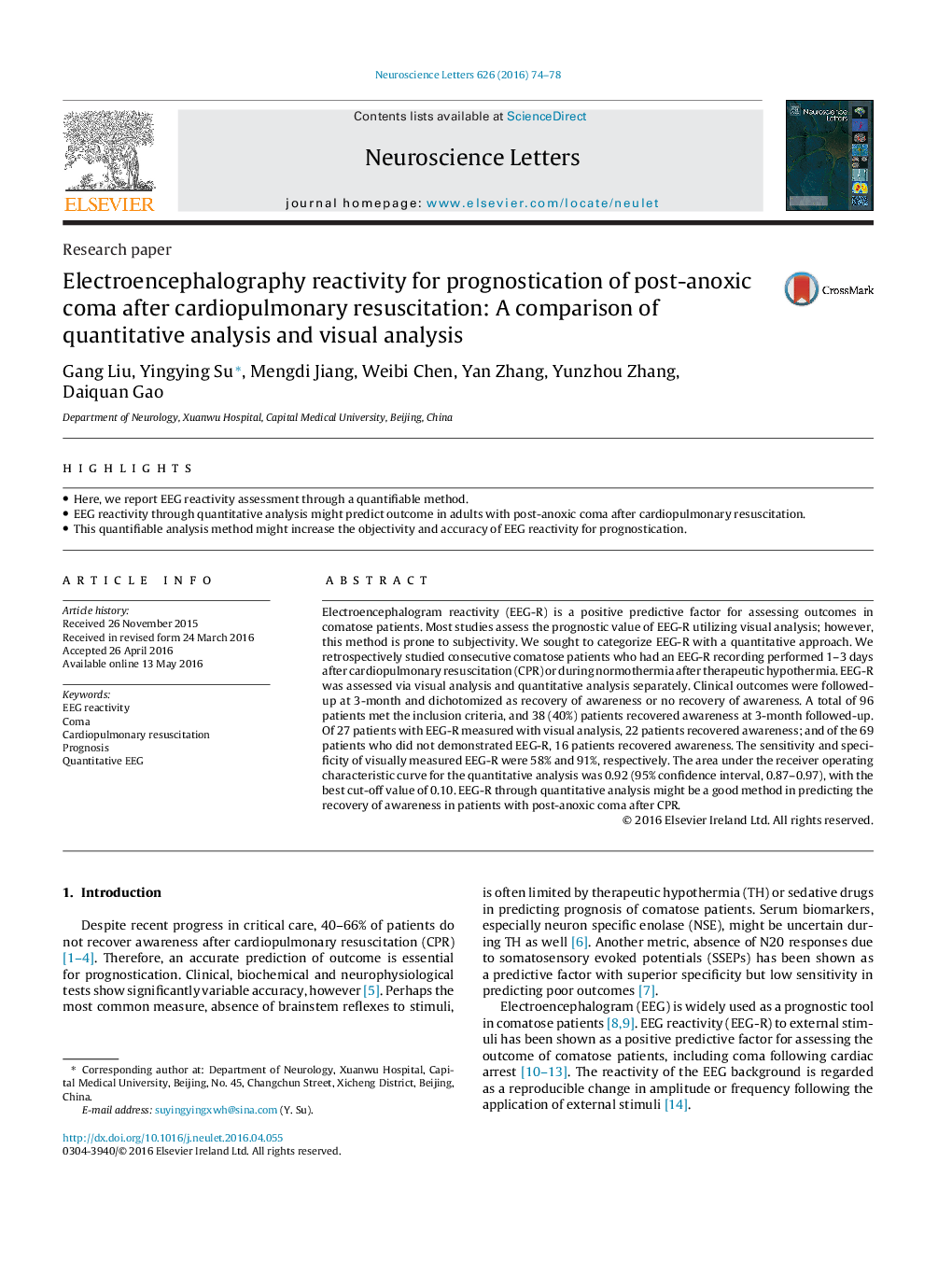| Article ID | Journal | Published Year | Pages | File Type |
|---|---|---|---|---|
| 4343183 | Neuroscience Letters | 2016 | 5 Pages |
•Here, we report EEG reactivity assessment through a quantifiable method.•EEG reactivity through quantitative analysis might predict outcome in adults with post-anoxic coma after cardiopulmonary resuscitation.•This quantifiable analysis method might increase the objectivity and accuracy of EEG reactivity for prognostication.
Electroencephalogram reactivity (EEG-R) is a positive predictive factor for assessing outcomes in comatose patients. Most studies assess the prognostic value of EEG-R utilizing visual analysis; however, this method is prone to subjectivity. We sought to categorize EEG-R with a quantitative approach. We retrospectively studied consecutive comatose patients who had an EEG-R recording performed 1–3 days after cardiopulmonary resuscitation (CPR) or during normothermia after therapeutic hypothermia. EEG-R was assessed via visual analysis and quantitative analysis separately. Clinical outcomes were followed-up at 3-month and dichotomized as recovery of awareness or no recovery of awareness. A total of 96 patients met the inclusion criteria, and 38 (40%) patients recovered awareness at 3-month followed-up. Of 27 patients with EEG-R measured with visual analysis, 22 patients recovered awareness; and of the 69 patients who did not demonstrated EEG-R, 16 patients recovered awareness. The sensitivity and specificity of visually measured EEG-R were 58% and 91%, respectively. The area under the receiver operating characteristic curve for the quantitative analysis was 0.92 (95% confidence interval, 0.87–0.97), with the best cut-off value of 0.10. EEG-R through quantitative analysis might be a good method in predicting the recovery of awareness in patients with post-anoxic coma after CPR.
